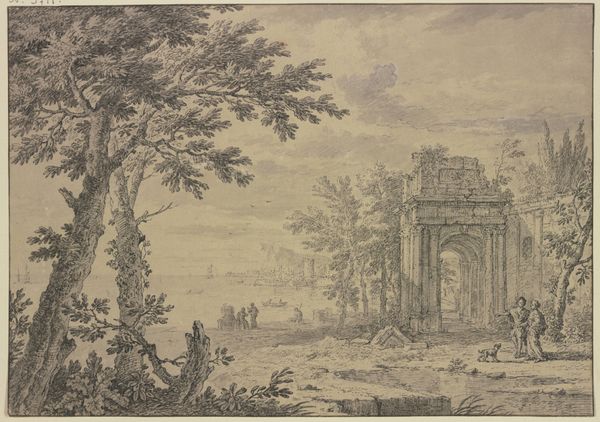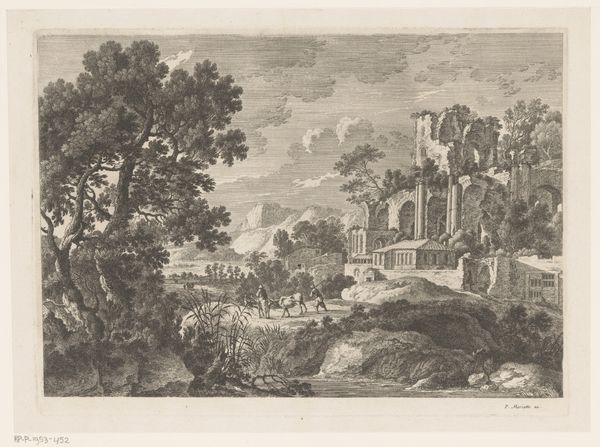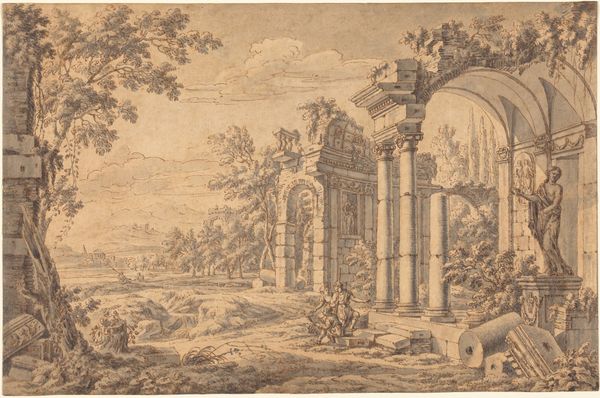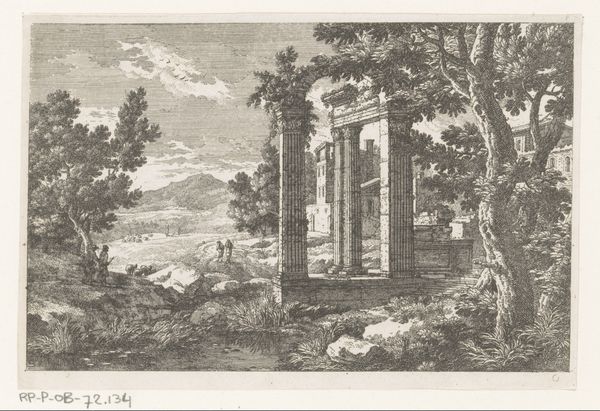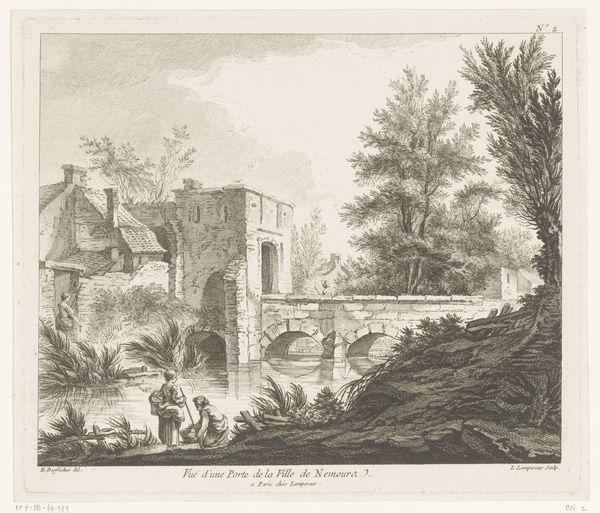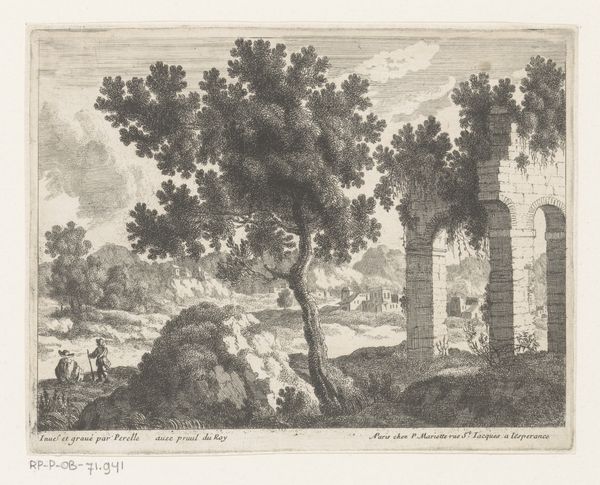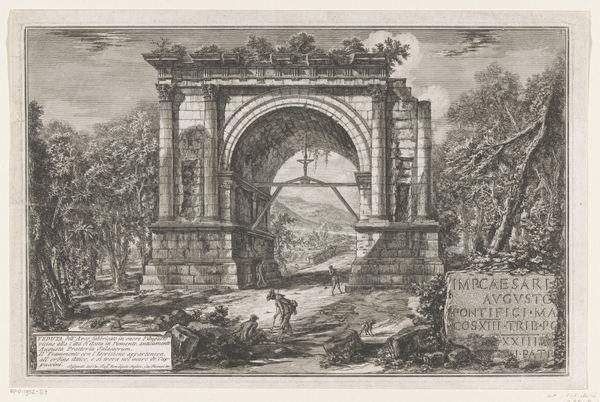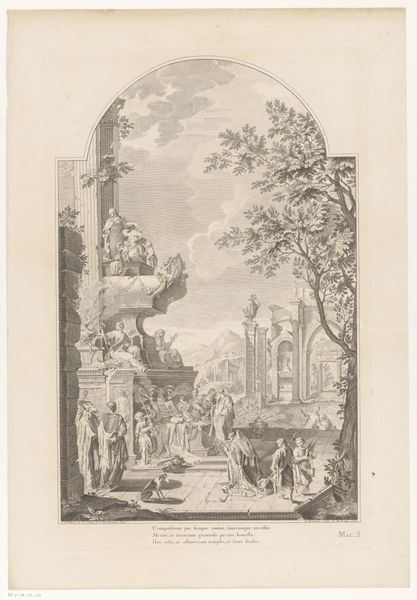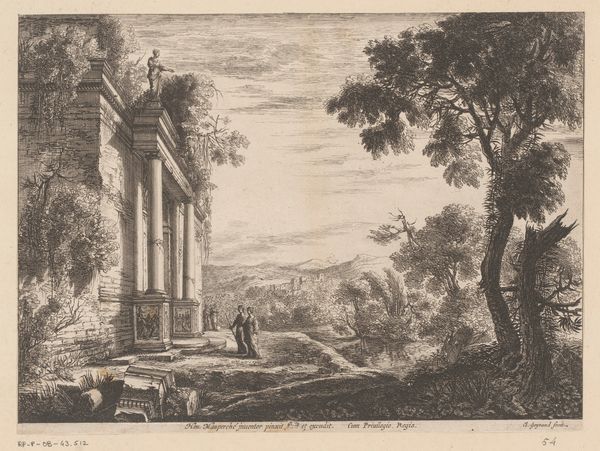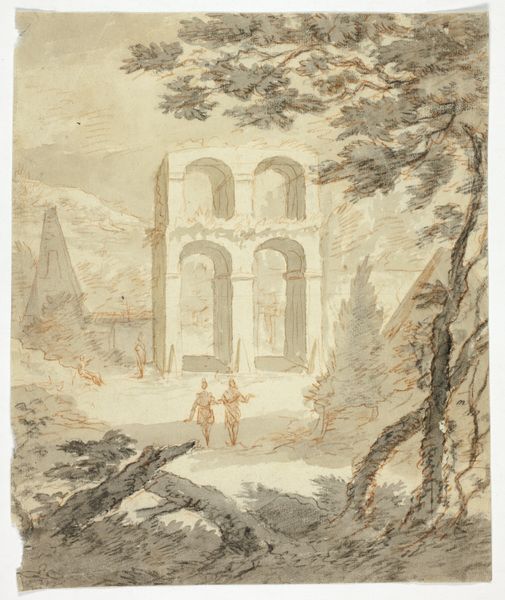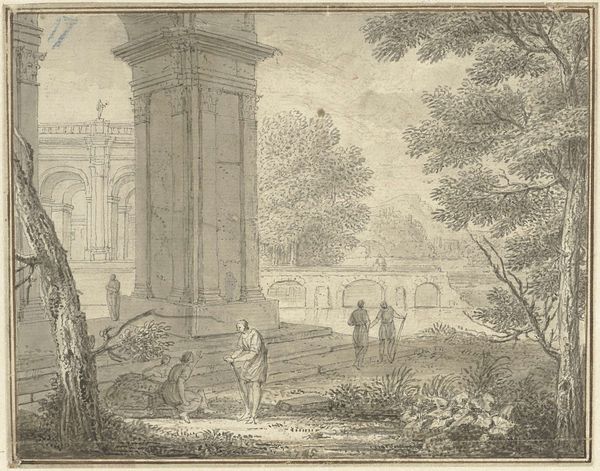
drawing, print
#
landscape illustration sketch
#
drawing
#
pen drawing
#
mechanical pen drawing
# print
#
pen illustration
#
pen sketch
#
pencil sketch
#
personal sketchbook
#
pen-ink sketch
#
men
#
pen work
#
sketchbook drawing
Dimensions: sheet: 4 3/4 x 6 7/16 in. (12 x 16.3 cm) plate: 4 1/2 x 6 5/16 in. (11.5 x 16 cm)
Copyright: Public Domain
Henri Mauperché made this print, "Le Pan de Muraille," in France sometime in the mid-17th century. It shows a landscape with figures, crumbling architecture, and vegetation rendered in fine detail. Mauperché was a painter and engraver, but it’s his work as a printmaker that makes him interesting to us from a social and cultural perspective. In 17th-century Europe, printed images played a crucial role in disseminating ideas and shaping public opinion. Prints were relatively affordable, so they circulated widely among different social classes. Royal Privilege - Cum Privilegio Regis - meant that the image was commissioned and authorised by the court. Landscape prints, such as this one, often reflected the values and interests of the ruling elite, who sought to cultivate an image of themselves as cultured patrons of the arts. At the same time, landscape prints also helped to shape perceptions of national identity and territory, promoting a sense of pride in the beauty and bounty of the French countryside. By studying prints like this one, along with other historical sources such as letters, diaries, and official documents, we can gain a deeper understanding of the complex social and cultural forces that shaped the art of the past.
Comments
No comments
Be the first to comment and join the conversation on the ultimate creative platform.

